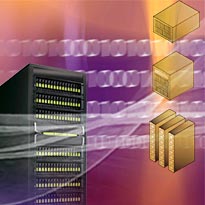Home
From Wikibon
| Line 4: | Line 4: | ||
{{Click||image=Icon_listen.gif|link= Media:11-18-08_Peer_Incite_mashup.mp3 | width=67px|height=16px}} | {{Click||image=Icon_listen.gif|link= Media:11-18-08_Peer_Incite_mashup.mp3 | width=67px|height=16px}} | ||
*[[2009 Storage budget cuts - what are your options?|Read the Peer Incite Research Notes]] | *[[2009 Storage budget cuts - what are your options?|Read the Peer Incite Research Notes]] | ||
| + | |||
*Help prep for the next Peer Incite [[Questions for EMC]]. | *Help prep for the next Peer Incite [[Questions for EMC]]. | ||
| Line 49: | Line 50: | ||
| - | [[Category:Blade computing]]<br />[[Category: Business compliance]]<br />[[Category: Clustered storage]]<br />[[Category: DMX]]<br />[[Category: Data classification]]<br />[[Category: Disaster recovery]]<br />[[Category: ECM]]<br />[[Category: EMC]]<br />[[Category: Email archiving]]<br />[[Category: Email storage]]<br />[[Category: Green storage]]<br />[[Category: Hitachi]]<br />[[Category: IBM]]<br />[[Category: Managing storage]]<br />[[Category: Mobile Enterprise Wikitips]]<br />[[Category: NAND]]<br />[[Category: SSD]]<br />[[Category: STEC inc]]<br />[[Category: Storage and business compliance]]<br />[[Category: Storage consolidation]]<br />[[Category: Storage disaster recovery]]<br />[[Category: Storage services]]<br />[[Category: Storage vendor management]]<br />[[Category: Storage virtualization]]<br />[[Category: WEB2.0]]<br />[[Category: Wikitips]]<br /> | + | |
| + | [[Category:Backup and restore]]<br />[[Category: Blade computing]]<br />[[Category: Business compliance]]<br />[[Category: Clustered storage]]<br />[[Category: DMX]]<br />[[Category: Data classification]]<br />[[Category: Disaster recovery]]<br />[[Category: ECM]]<br />[[Category: EMC]]<br />[[Category: Email archiving]]<br />[[Category: Email storage]]<br />[[Category: Green storage]]<br />[[Category: Hitachi]]<br />[[Category: IBM]]<br />[[Category: Managing storage]]<br />[[Category: Mobile Enterprise Wikitips]]<br />[[Category: NAND]]<br />[[Category: SSD]]<br />[[Category: STEC inc]]<br />[[Category: Storage and business compliance]]<br />[[Category: Storage consolidation]]<br />[[Category: Storage disaster recovery]]<br />[[Category: Storage services]]<br />[[Category: Storage vendor management]]<br />[[Category: Storage virtualization]]<br />[[Category: WEB2.0]]<br />[[Category: Wikitips]]<br /> | ||
Revision as of 14:01, 4 December 2008
Peer Incite: Grant, a Sr. Storage Admin at a large bank discusses how heterogeneous storage virtualization can help reduce the budget for 2009.
- Help prep for the next Peer Incite Questions for EMC.
WikitipApplications of RFID for specific industriesRadio frequency identification (RFID) has been used since the Second World War for defense strategies, but is now more accessible and being implemented in industries such as pharma, retail, logistics, travel, and agriculture. RFID can be used in many different ways to create value. In this blog post, we will present the most interesting and widely used applications of RFID. RFID is a system that uses small radio frequency identification devices for tracking purposes. RFID touts advantages such as the lack of human intervention needed and reduces costs for some industries. Supply chain management When RFID is implemented in supply chain management, stock is more easily managed and logistical costs can be minimized. The world’s largest retailer, Wal-Mart uses RFID for improving supply chain efficiency and to ensure that products are in stock to meet customer demands. Wal-Mart has also implemented automation of just-in-time product shipments. The warehouse management system can locate the products in the warehouse based on the initial scan, and automatically moves them to a loading dock for shipping to the retail outlet. Manufacturing RFID can be used for tracking parts and work during the manufacturing process. By implementing this system, companies can reduce the number of flawed products, increase movement and manage the production of different versions of the same product. This is found mostly in the car and automotive industry. For example, AM General uses an active RFID for its new golf cart assembly line to cut the time it takes to build each vehicle ( from 88 minutes to about 46 minutes ). Pharma Implementing RFID in this industry has been a new challenge that started with medical centers wanting to improve stock controls. It then was implemented in other ways such as adapting the system for ensuring that FDA guidelines are met and supporting the use of RFID with biologics. For example, Hanmi Pharmaceutical tags 60 million products each year, streamlining operations, preventing fake products and maximizing traceability throughout their supply chain. The applicability of the RFID is extensive and is still targeting new industries. RFID helps companies increase the credibility and the shelf life of their products, and makes food and pharma industries more safe and the automotive industry more productive. We are looking for more applicability of RFID and encourage you to share some examples. |
Featured Case StudyVirtualization Energizes Cal State UniversityJohn Charles is the CIO of California State University, East Bay (CSUEB) and Rich Avila is Director, Server & Network Operations. In late 2007 they were both looking down the barrel of a gun. The total amount of power being used in the data center was 67KVA. The maximum power from the current plant was 75kVA. PG&E had informed them that no more power could be delivered. They would be out of power in less than six months. A new data center was planned, but would not be available for two years. |
|
Featured How-To Note |
Storage Virtualization Design and DeploymentA main impediment to storage virtualization is the lack of multiple storage vendor (heterogeneous) support within available virtualization technologies. This inhibits deployment across a data center. The only practical approach is either to implement a single vendor solution across the whole of the data center (practical only for small and some medium size data centers) or to implement virtualization in one or more of the largest storage pools within a data center. | |||



